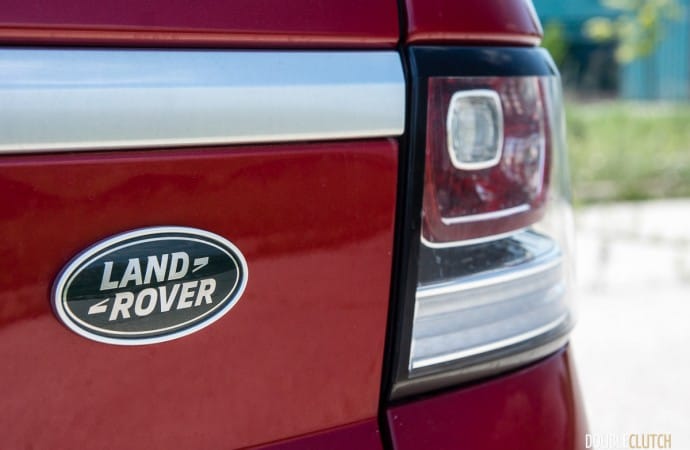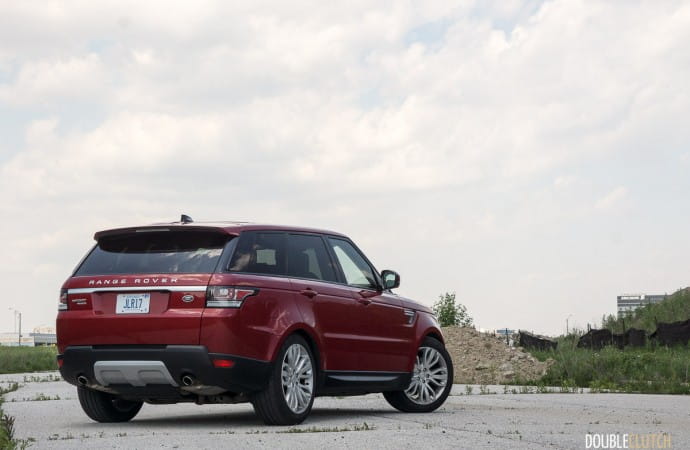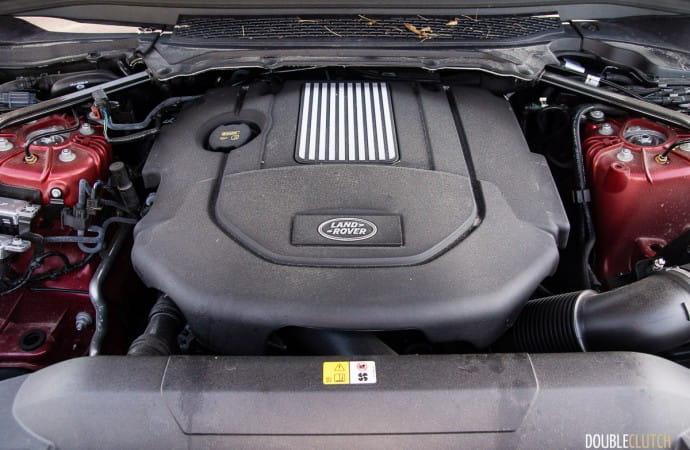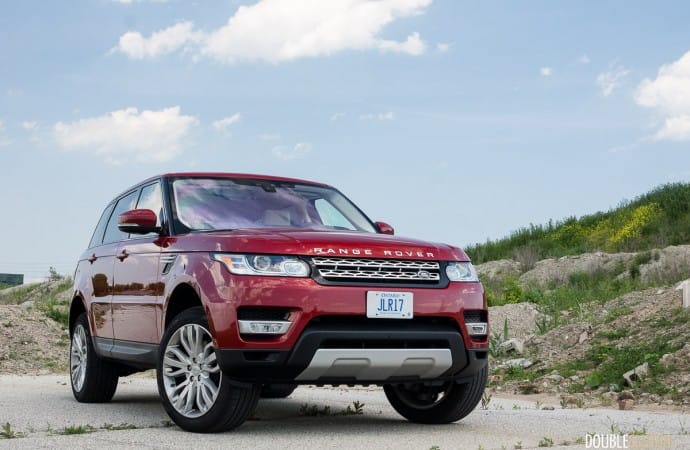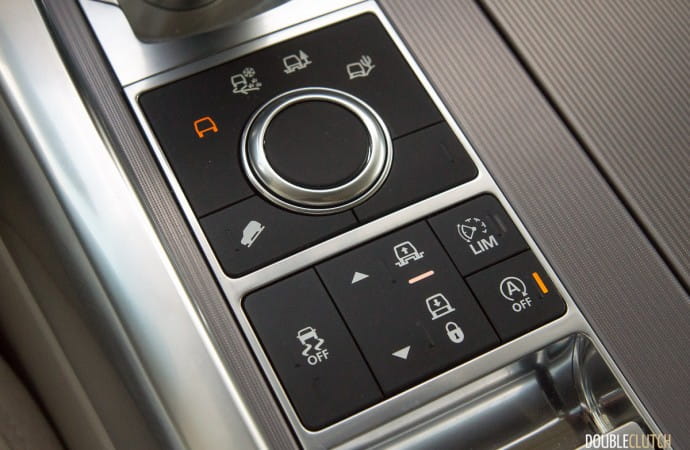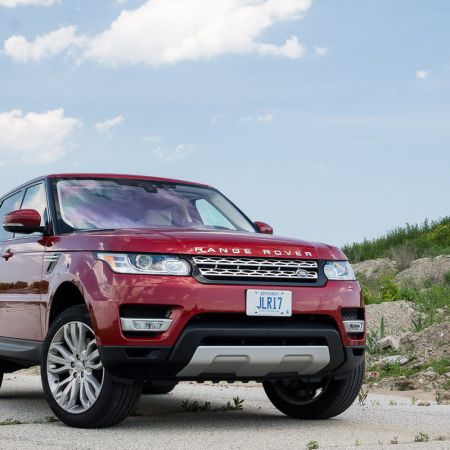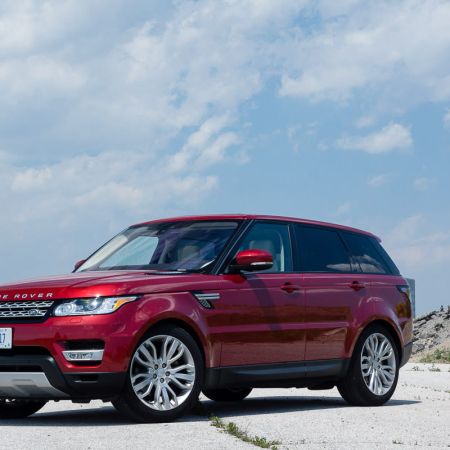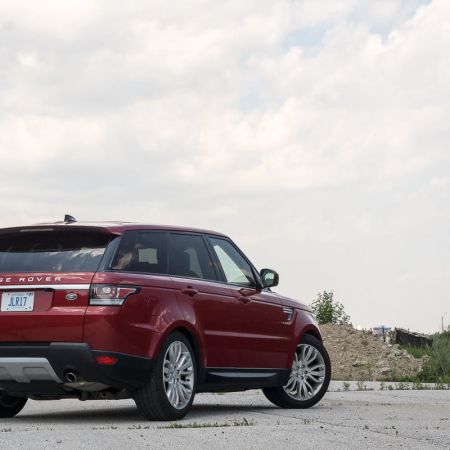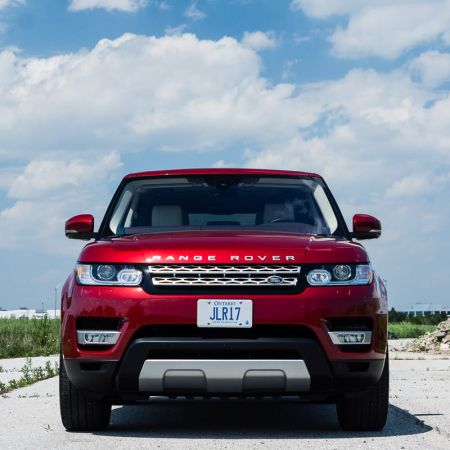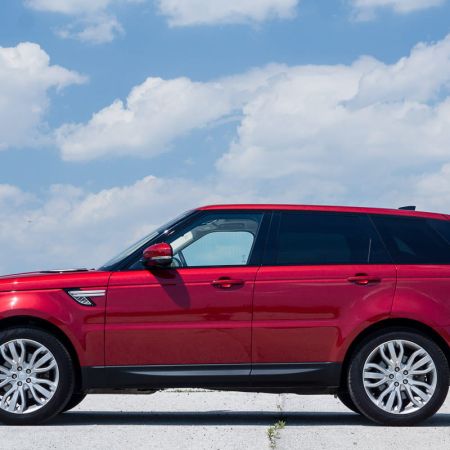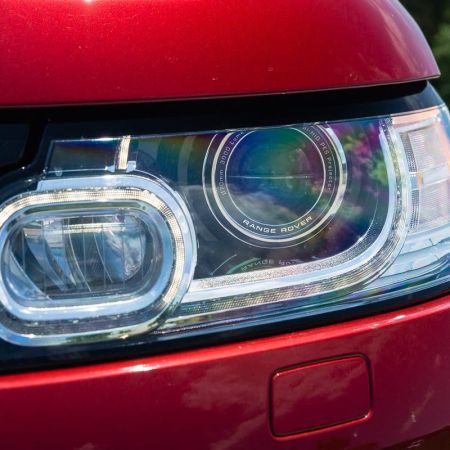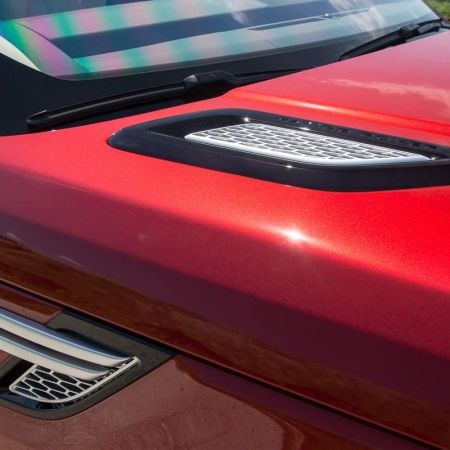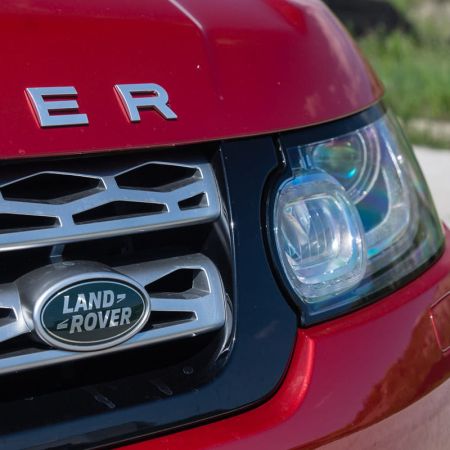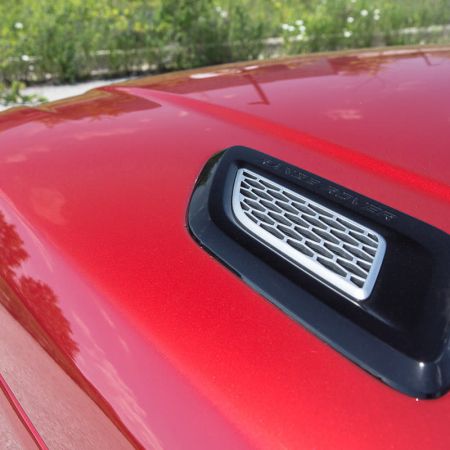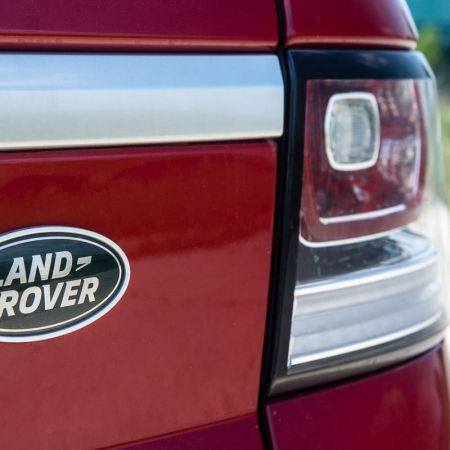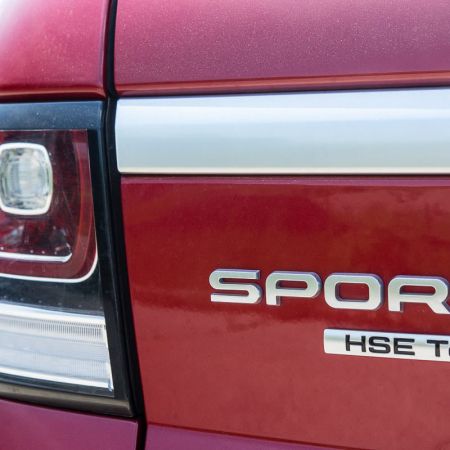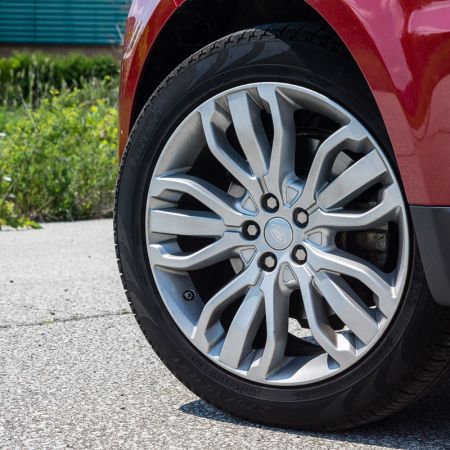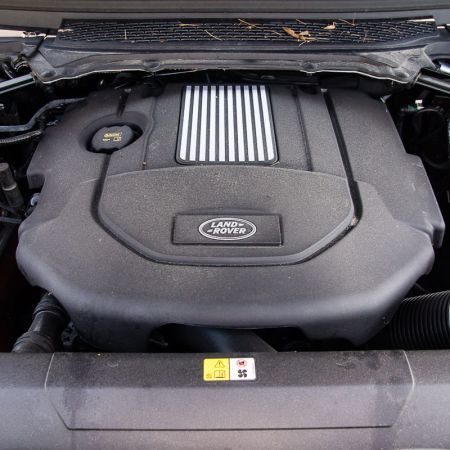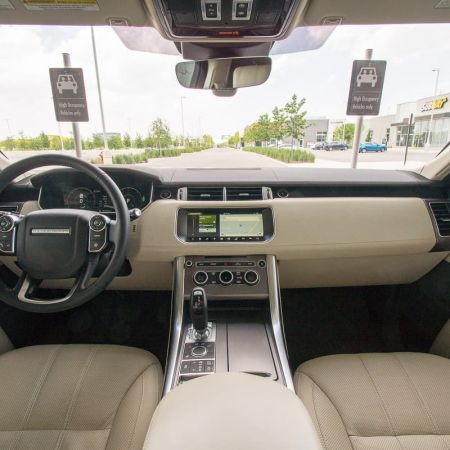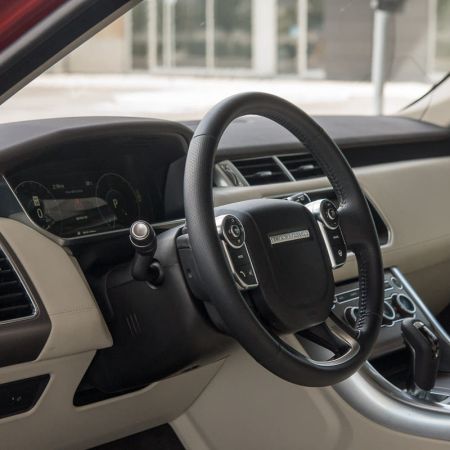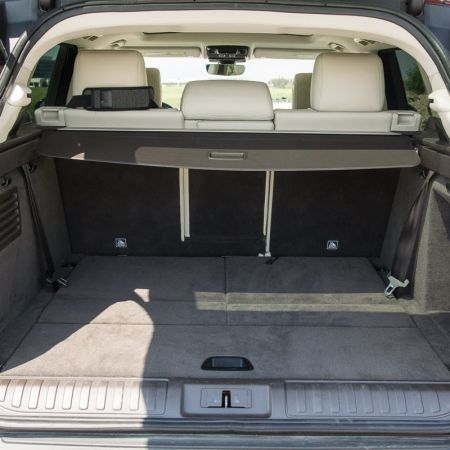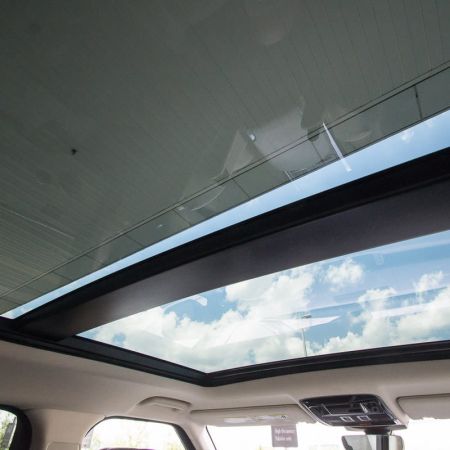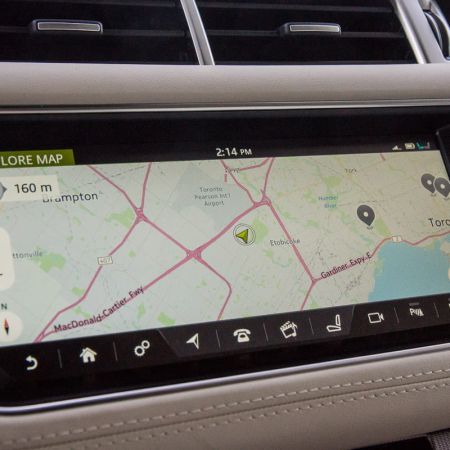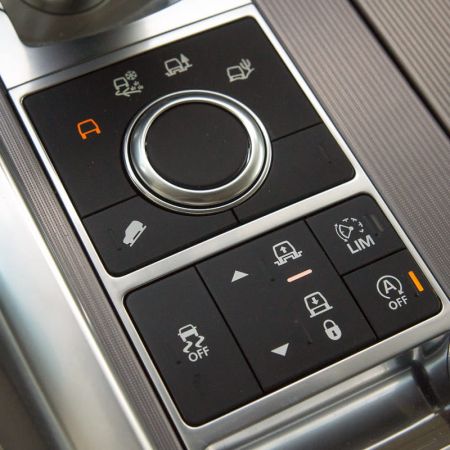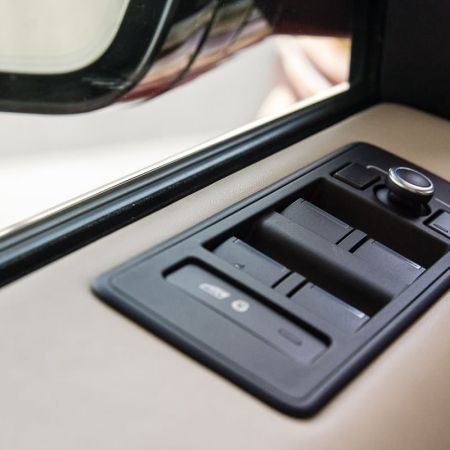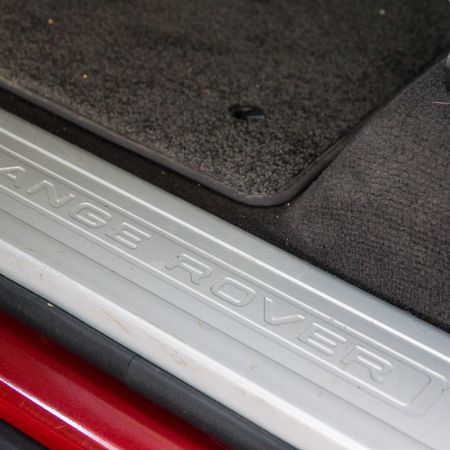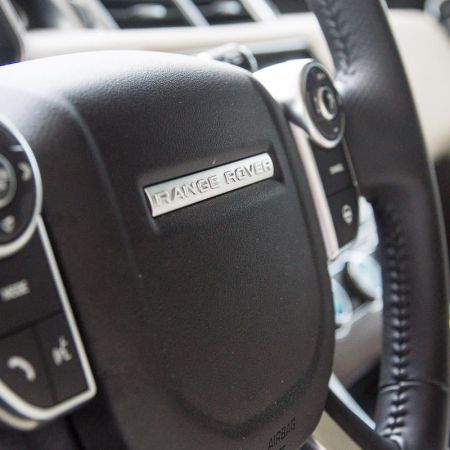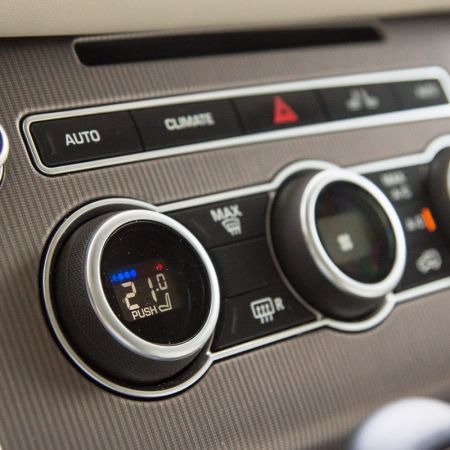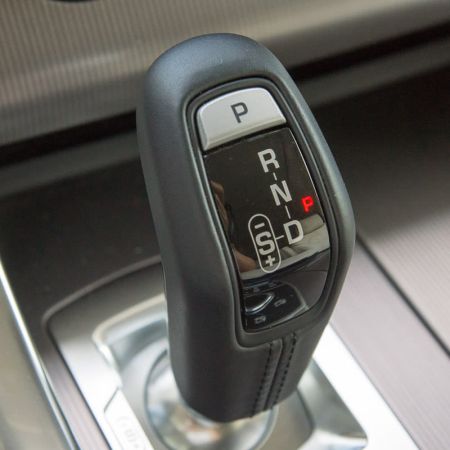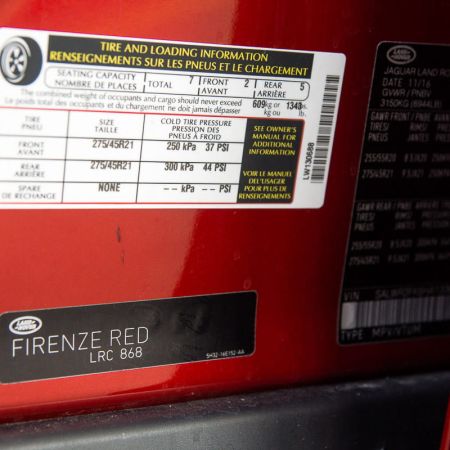It is generally accepted across the industry that nowadays, people don’t take their trucks off the beaten path. Car-based unibody crossovers have become the de-facto minivan, used to ferry the family around the city, between shopping malls or the supermarket on Saturdays. Automakers around the world have jumped on and embraced the trend, and even storied brands such as Land Rover are no exceptions. The immensely capable Range Rover wasn’t originally designed as a premium luxury SUV, but rather a utilitarian work vehicle that was simply able to go just about everywhere it was able to fit.
The first-generation Range Rover was unveiled in 1970 and enjoyed an extremely long run up until 1996. It was built on a traditional body-on-frame structure, and its technology portfolio wasn’t much updated throughout the entire 26-year span. The second-generation ran from about 1995 onward to 2002 – a scant seven year product lifecycle, when compared to its predecessor. The on/off-road balance shifted, as more premium features were fitted, which saw the Range Rover move upmarket into the luxury space. The third-generation Range Rover (introduced for 2002) changed everything, thanks to the BMW’s ownership, which saw German V8s under the hood in certain years. What also changed is the construction, which was now a unibody design, which offered better on-road manners. The success of the third-generation Range Rover was a cue to the corporate overlords – premium luxury road-focused Range Rovers could sell.
During the third-generation Range Rover’s tenure, separate models started to appear under the Range Rover umbrella. The Range Rover Sport was conceived as an even more road-focused variant. At the same time, its styling was more low-slung, rather than the upright box that the “big daddy” Range Rover retains. The current second-generation Range Rover Sport technically dates back to 2013, with turbodiesel power specifically being added for the 2015 model year. Land Rover Canada sent over a “Firenze Red” 2017 Range Rover Sport HSE Td6 for a week-long evaluation.
The Range Rover Sport’s exterior design is distinctive, recognizable, and aspirational, right down to the block letters that identify the branding on the leading edge of the hood. On the HSE trim package (which happens to be one of seven), LED fog lights, panoramic sunroof, and 20-inch wheels are all standard equipment, though this particular tester was equipped with 21-inch wheels. The swoopy and lower-slung body of the Range Rover Sport doesn’t just mean it is a more style-focused urban street machine. Underneath the skin, the aluminum unibody structure (as opposed to a steel ladder frame) allows for the second-generation truck to weigh 360kg (800lbs.) less than the first-generation variant. This significant weight decrease is especially impressive, as it allows for improved efficiency, better dynamics, and reduced running costs from not having to cart around so much weight.
The downside versus a more traditional full-frame structure is the reduced maximum towing capacity of 3,500kg, and the reduced off-road durability. However, the Range Rover Sport doesn’t make very many claims of being a rock-crawler that its big brother does. For what it’s worth, the high-performance Range Rover Sport SVR (reviewed here) is a tarmac-focused motorsport SUV, which can compete on racetracks with the likes of trucks like the BMW X5 M (reviewed here), and Mercedes-AMG GLE 63. This tells you quite a bit about the Range Rover Sport’s general priorities.
As iconic as the Range Rover and Range Rover Sport models are to look at on the outside, they really focus on interior luxury features and convenience. Premium materials such as leather, suede, aluminum, and real wood are all standard equipment – though you can even add more optional leather to the tops of the door cards with the “Extended Leather Upgrade”, for $1,500. On the practical side of things, a power-operated third-row seat is available for $2,000, but consider it for emergency use only – they call it a “5+2” if that is any indication. No luxury vehicle is complete with soft-close doors, as part of the Vision & Convenience Pack ($2,000), which also includes configurable ambient interior lighting as well as a 360-degree surround camera system that helps you maneuver the big truck into tight spots. Park Assist ($950) takes things further by actively helping you slot yourself into a parking spot. The “Canada TL3 Luxury Pack” adds four-zone climate control, 18-way front seats, and heated and ventilated second-row seats, among other features – yours for $1,950.
The double-paned side glass and generous insulation materials all around ensure the Range Rover is a quiet and serene place to be, and it even manages to keep the deep baritone thrum of the turbodiesel engine up front muted. The wide seats are adjustable in such fine movements, that it may take quite some time for you to find your “perfect” driving position. Ahead of the driver, is the Virtual Instrument Panel, which packs in a 12.3″ full LCD screen in place of the traditional analog instrument cluster. It is configurable in a great deal of ways, but it still has some ways to go before it can be compared to Audi’s excellent Virtual Cockpit (reviewed here), which does a better job integrating navigation information into the screen. The Range Rover solution also doesn’t seem to boast as high of a resolution than what Audi offers. For the vast majority of the week, it was left in the standard two-gauge setup, with trip and efficiency info in the centre, in between the “virtual” speedometer and tachometer.
As iconic as the Range Rover family is, what got me excited is the powerplant under the hood. The subtle Td6 badging on the tailgate is about the only indicator of the turbodiesel V6 that provides the motivation. Displacing 3.0L, it is a 60-degree design, its block built from rugged iron. Two variable geometry turbochargers are strapped to its sides, helping boost horsepower to a respectable 254hp, and a stump-pulling 440lb-ft of torque from 1750-2250rpm. Power is sent through ZF’s eight-speed automatic to all four wheels. The big torque delivery right at the bottom of the rev range means the engine rarely has to break a sweat to get the heavy 2136kg truck moving from a standstill.
One of the things the Range Rover excels at is making luxury feel effortless. Part of the allure behind the diesel engine is its rich torque delivery at very low engine revs. The engine doesn’t have to work very hard to deliver all of its power. While the supercharged gasoline V6 and V8 does a fantastic job of putting out effortless power and speed, the turbodiesel V6’s lazy nature is well-suited to the cruising that it’ll mostly be doing. Land Rover rates the run from 0-100km/h in the Range Rover Sport Td6 at 7.6 seconds. That number may seem fairly leisurely, but it’s explained by how the diesel produces power: lots at the bottom of the rev range, and a noticeable reduction in urgency as you reach the low redline.
Another tangible benefit to the turbodiesel engine is the improved overall efficiency. Numbers for the 2017 model year weren’t published by Land Rover at this time, but the 2016 numbers published by Natural Resources Canada suggest that the Range Rover Sport Td6 should get about 10.6L/100km in the city, 8.1L/100km on the highway, and 9.4L/100km in a combined cycle. During my week of mixed driving, I ended up with an indicated average of 9.3L/100km, which matches up almost exactly to the “combined” figures. The Range Rover Sport Td6 will accept 93L of diesel, and you’ll have to keep the diesel exhaust fluid reservoir periodically topped up as well – usually at major service intervals.
The Land Rover Range Rover Sport slots in somewhere just above the middle of the Land Rover lineup. Starting at $77,000 for the base SE, the HSE tested here is particularly interesting, because the turbodiesel V6 is only available on the HSE trim. So, if the non-gasoline engine is the main attraction, you’re not able to choose any other trim. Right off the bat, the price jumps to $84,500, which gets you the oil-burning engine, LED fog lights, heated and ventilated rear seats, 20-inch wheels, and premium Oxford leather.
On this particular test vehicle, the Firenze Red is an $850 option (there is a huge selection of colours available), and the fitted 21-inch wheels will run you $1,800. The “Drive Pack Pro” active safety and driver assist system is $2,350 and adds items such as radar adaptive cruise control, lane departure warning, lane keep assist, as well as forward collision mitigation. As equipped, this particular truck rings in at $99,300, as-tested, before taxes, . If it were up to me, I would add the $1,650 Extra Duty Package, which adds a two-speed low-range transfer case to the driveline, as well as dynamically adjustable dampers to the suspension.
The fact that the 2017 Range Rover Sport HSE Td6 is an exemplary luxury vehicle goes without saying. People buy into the brand heritage that is a combination of premium amenities and massive capability. The turbodiesel V6 under the hood does a great job delivering the effortless luxury, with a characterful sound that is more unique than with the other engines available. However, there’s still a reason why the supercharged gasoline V8 lives at the top of the range, and it is partly because eight happens to be more than six. The excellent audio soundtrack produced by the Land Rover 5.0L V8 also has a lot to do with it. When it comes to turbodiesel engines, these past years have been difficult – the entire Volkswagen group no longer sells new vehicles with diesel engines, and this includes all of their premium luxury products. This in mind, Jaguar-Land Rover’s new Td6 engine manages to become the best 3.0L turbodiesel V6 around, thanks to its excellent efficiency, refinement, and prodigious torque delivery. If in the market for a Range Rover Sport, the HSE Td6 would be the one I would have.
2017 Range Rover Sport HSE Td6 Gallery
See Also:
2016 Mercedes-Benz GLE 450 AMG

